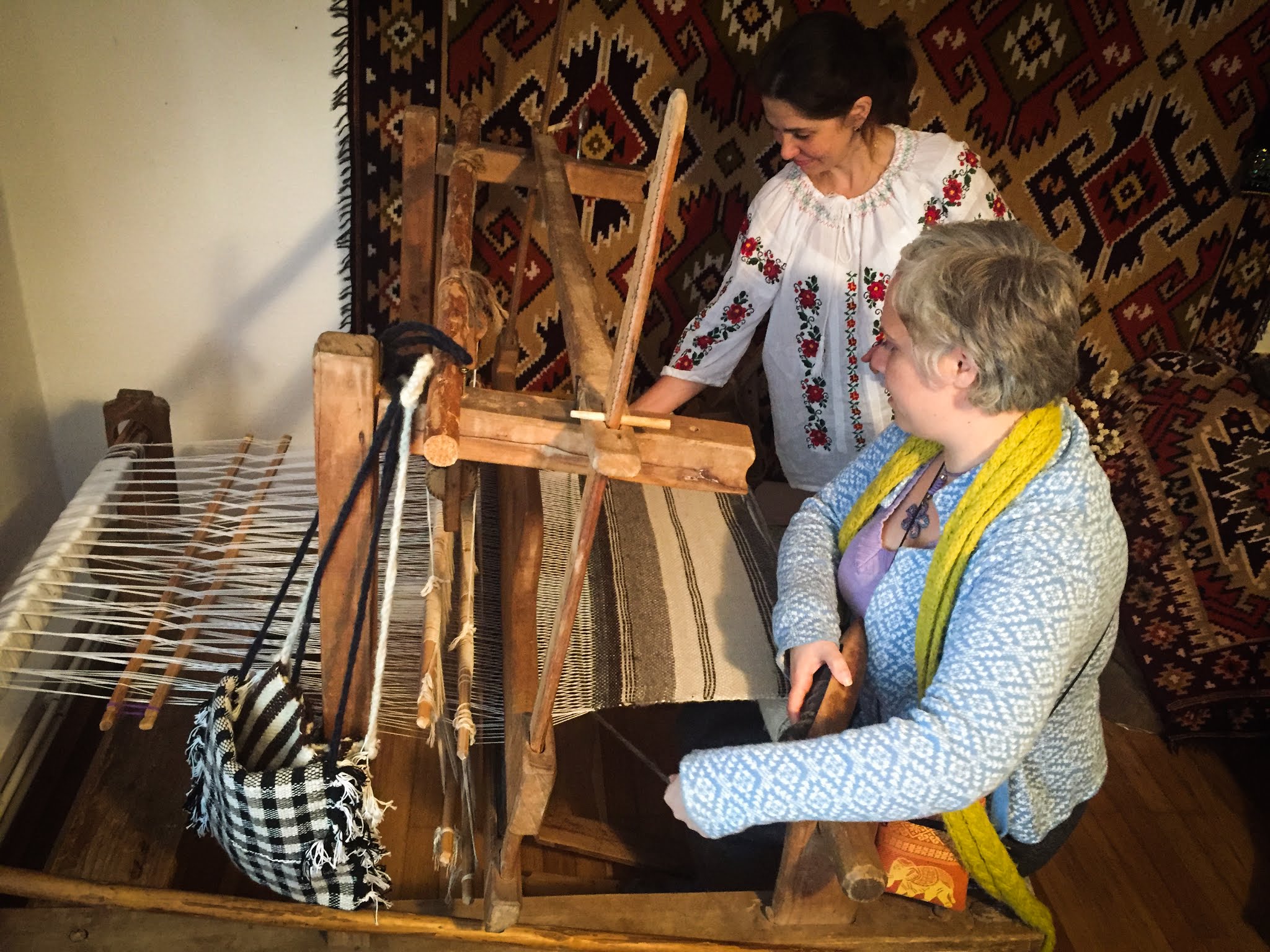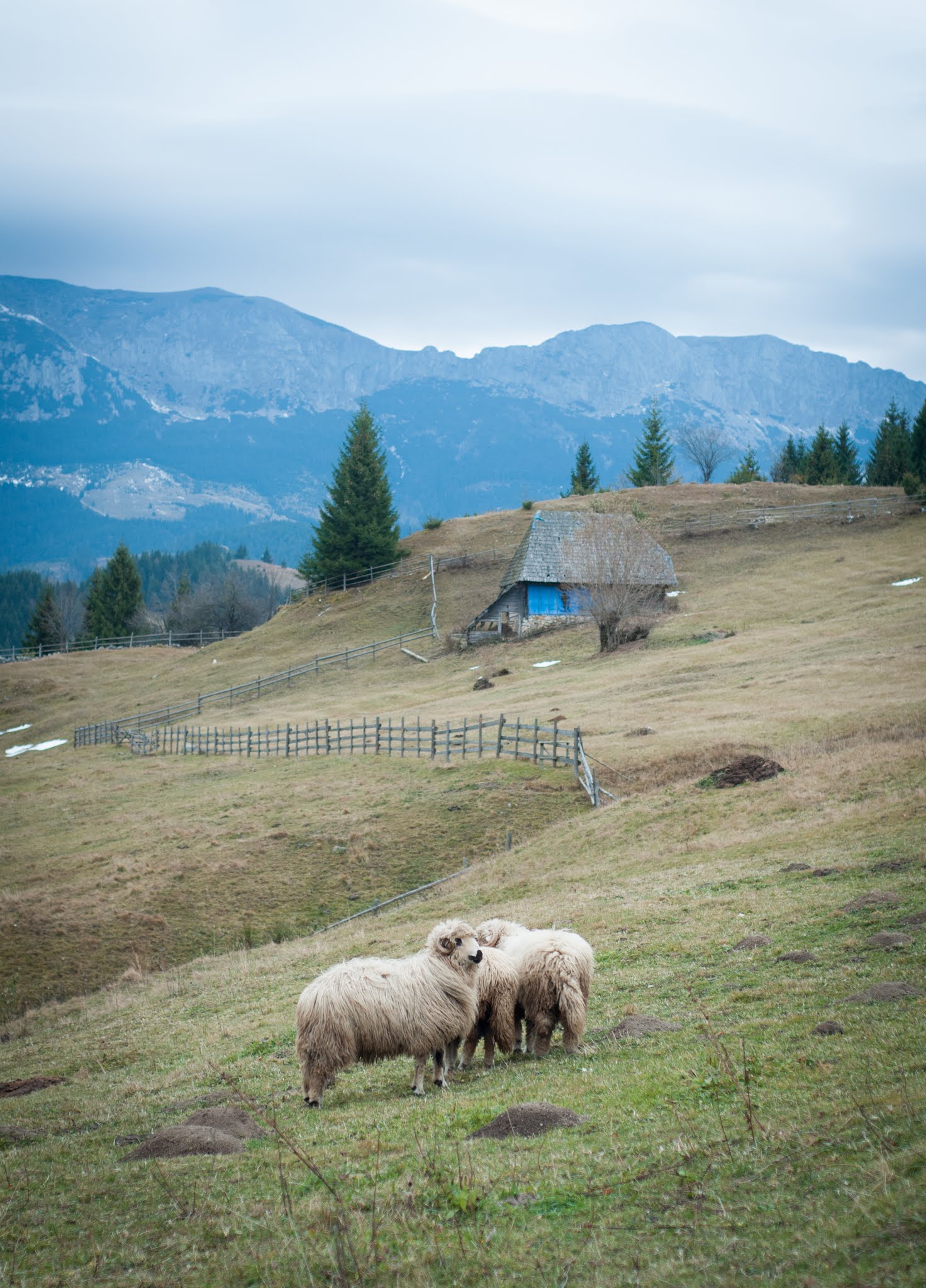Resuscitating Bran
A long time ago, while Marcel and I were travelling through Iceland, we met a French man accompanied by his two children, one of them even bearing a Romanian name. He was in love with Romania. But he told me something that has stayed with me ever since: ‘You, Romanians, love and hate your country at the same time’.
…here we were, on an InfoTrip to which we were invited by Centrul de Ecologie Montană of Moeciu de Sus, welcomed on the bus by dedicated Ramona Ganea.
Passing through unknown Predeluţ to escape the traffic in Bran, we arrived just in time for a hot cup of fruit tea and some slices of pound cake to make my morning. With a deep passion for all things historical, I became fascinated with the words of Ioan Prahoveanu – historian and ethnographer; this man is simply a walking collection of knowledge.
Visionary Mihai and Natalie Orleanu then started raising the alarm. Ecosystems, traditions, and ways of living about to disappear in the Bran area.
Sure, I knew that modernism and greediness were taking over the great outdoors and the traditional welcome of the countryside, only some 30 km away from Braşov.
However, I didn’t know that it was that serious and urgent for us to get involved.
Of course, running one of those gigantesque Baudelairean B&Bs seems easier than a day spent drying the hay. And much more lucrative. But is this the right way to transform one’s life or our right to judge it?
‘I would rather work with weather boards than have some regular 9-to-5 job’ – one of the last handicraftsmen dealing with weather boards in the area told us. He must. The last time he’s worked in this traditional manner on a house was two years ago.
Maria Dumitru has a loom in her house from Moeciu de Sus. It is one of the few being still used in the Bran area. The young lady learned weaving from her mother and is happily still creating bags and carpets using traditional colours and designs. The main colours used in Romanian weaving are black and white, sometimes mixed with earthy colours (the only ones still obtained naturally for the wool). She also crochets – so I was happy to try out her loom and buy some beautiful winter accessories handmade by her. I always like to encourage local producers! It’s what keeps them alive. It’s what keeps a nation’s soul alive.
In Fundata, I was first blown away by the scenery – yes, the typical example of a dotted Romanian mountain village. Splendid and still authentic – partly due to its remoteness. Stoian Family still has a traditional house standing; it dates back to 1922 and is full of interesting exhibits. I even spotted an old radio (one that my Grandpa used to own) amidst male and female garments, the wheel motif as the passing of the time – very present in Romanian decorations –, or even an old school bag that historian Prahoveanu admitted to have worn during his childhood years. A perfect surprise was still in store: a yard feast. Romanian style. Complete with cheese of two kinds, white bread, red onions, and pălincă. For those dessert lovers like me, the highlight was however the big stack of homemade donuts, spread on several plates on the long wooden table. We left watching a few people jog or mountain bike the trails and happy for the cheese we had bought, as its taste had bewildered us at lunch.
Our last stop was Şirnea. Over a hill, there was a house where we were told the story of a primary school teacher. She now has only 10 students combined in all four primary grades. And she tried to teach them to sew, but was unsuccessful, ‘as youngsters are not interested in traditional activities anymore’. Still, she continues the dream of her mother-in-law and embroiders ribbons and vests using colourful beads and works mostly during the night; she is the only one left doing this.
Dinner was a great occasion to cool down, but the questions of the day endured.
As one of the last countries of Europe to be as wild in terms of nature and still hold a traditional way of living, wouldn’t it be normal for us to fight and preserve our heritage?
It is a real treasure.
‘I never suggest a visit to Bran Castle to my friends from abroad’ I told Electra Ghiza, a warm journalist that I discovered on this trip. She nodded.
It may be the most visited attraction in Romania, but we, Romanians, are not only that. Bran area is not only that. The possibilities go well beyond mass tourism and the superficial on every street corner.
Experiences are those that stay with us.
Do I agree with my French friend’s words? Not fully, but he does have a point. Let’s change that.
For help in getting in touch with local artisans and for guided treks, contact Poarta Carpaţilor, our lovely hosts for the day.






















No comments: